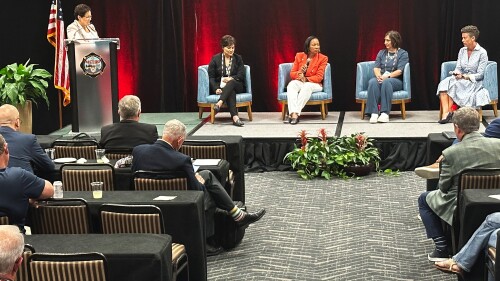Editor’s Note: Fire department call volumes reflect far more EMS responses than fully-involved fires. Today’s fire chiefs face unique challenges in staffing, equipping, housing, transporting and training the right crews for the job with the myriad of incidents they respond to. Learn more in this Special Coverage Series: Leveling up Fire-Based EMS.
As many fire departments experience a high EMS call volume, it’s important to train firefighters in providing EMS services with clear objectives.
During his stint in the Army during World War II, Robert Mager noticed there was often a discrepancy between the way recruits were taught and the way they actually performed. While this was frequently blamed on the recruits, Mager believed that the problem was that instructors and students were concentrating more on the process of training than on the performance outcome they were shooting for.
His observations eventually lead him to Ph.D. work revolutionizing the way instruction is translated into performance. Most fire and EMS instructors today are broadly familiar with Mager’s ABCDs of writing objectives, but objectives are more than something to be looked over at the beginning of class. When used to guide instruction, they can make your education programs more focused, more engaging and much more effective.
According to Mager, good objectives are critical to setting effective expectations for firefighter performance. They should be clear on three things.
1. Performance: what the firefighters should do
Identify what you want the students to be able to do at the end of your course, class or drill that they could not do at the beginning. Being specific about this change will keep you, your co-instructors and the students all focused on making that change happen.
This keeps us from rehashing things the audience already knows or can already do and helps steer us away from nice-to-know information that doesn’t significantly improve student performance.
2. Conditions: where they should be able to do it
Identify the situations the students will be working in when they perform the skill you are teaching. While not every class can involve a full-scale patient simulation, what you teach and the way you teach it needs to move your audience towards being able to perform a skill under the conditions they will likely encounter.
For example, if you are teaching a firefighter to assess a stroke scale, with a real patient they would not say, “I’m assessing you for stroke, what do I find?” and be given the answer. Likewise, to assess a trauma patient, firefighters may need to be able to assess a patient under noisy conditions in cramped quarters. While you may not have brand new students attempt this right away, you must keep in mind that these are the conditions you want them to be able to work under and your training must always be moving them towards that goal.
3. Criterion: Exactly how well it must be done
Perhaps the most important, but most often missed part, of setting effective objectives is being specific about the degree to which the firefighter should be able to perform the skill under the conditions that you have defined.
- Do they only have to tell you how they would do it?
- Do they only have to find three out of five injuries? Do they have to be able to do it correctly once out of 10 attempts?
- Do they have to do it correctly 9 out of 10 attempts?
Even if these criterion are clear in your mind, make sure your students also completely understand these expectations and the reasons behind them.
Being specific about the performance, conditions and criterion can help keep instruction focused on improving specific aspects of performance and must promote the creativity and critical thinking skills that firefighters need to adapt to solve today’s complex problems.
Find your PACE
It is crucial that firefighters know the difference between adapting to a challenge and using an excuse to take a convenient shortcut. A simple way to guide effective decision making is to have firefighters identify their PACE choices:
- Primary. What is the primary tool to use? This is always what we are shooting for.
- Alternate. If I’m not able to use the primary choice, what is the alternate, or immediate plan B?
- Contingency. If you can’t use either of the two best choices, what idea will be an effective contingency plan?
- Emergency. Finally, if everything is burning down around us (maybe literally) what is our emergency plan, even if it is high risk?
Coming up with solid PACE choices and helping firefighters identify one over the other helps take a firefighter who is great at performing a skill become great at deciding when or what skill to perform.
At the end of class, simply asking each student to tell one thing that they will take away from the class encourages every student to reflect on the most important lessons of the class and engages peer teaching. It also gives the instructors a quick assessment of how well the students’ big take-home points line up with the objectives.
Even when you find that the students are able to perform the skill under the right conditions and to the right criteria, they still need to understand the importance of when and why they would do it and be confident that they can succeed. If the take home statements from the students don’t reflect that, you may have students who can achieve the objectives, but won’t actually do what is needed on scene.
If, like Robert Mager, you’ve ever seen a disconnect between the way students train and the way they perform, take a minute to make sure that your objectives are clear on the important points, that your students have backup plans and know when to use them, and that when they leave your training, they are not only competent, but confident in the skills they’ll need to make a difference.
This article, originally published in December 2018, has been updated.


















